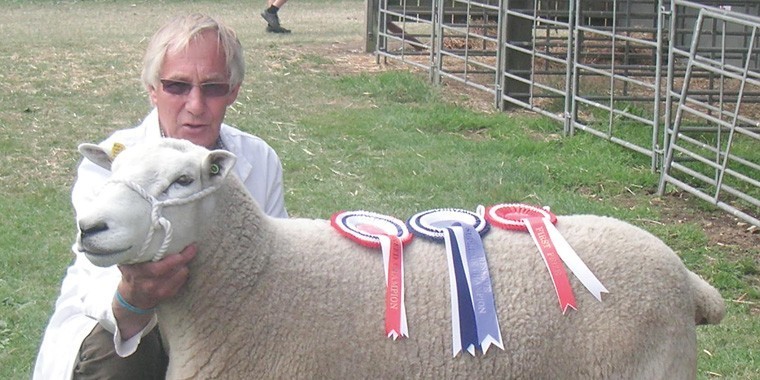Having a Tuesday with no other commitments is a good opportunity to go through this year’s ram lambs once again, now that they have grown on a bit since weaning, and filter out the not so good (but not poor) ones for sale before Christmas.
As a result I have just returned from Ashford market. Having decided which of the ram lambs needed to go, the best thing was to get rid of them straight away. Leave it a week or two and suddenly some of them don’t look quite so bad and the whole selection process begins again – and they really did need thinning out. If I had left them until after Christmas they would simply have been discounted even further both as entire rams and as hoggets.
All things being considered, they sold quite well: trade was up on the week, they were a good weight and someone obviously wanted them. At least they will not now be eating into grass supplies, which although not yet tight have stopped growing to the sheep. Following the few recent cold nights which have brought about a significant decrease in soil temperatures, grass growth has slowed down quite markedly. We have been quite lucky up until now: if we’d had a cold autumn grass growth could have stopped weeks ago.
I actually quite enjoy a visit to the market from time to time, particularly at this time of year. Once the Christmas prime stock shows have been, there always seems to be a bit of a Christmassy feel to the market. People do tend to forget the social function the livestock markets fulfill. Every week in Ashford there will be the same group of retired farmers, having a cup of tea, talking over old times and catching up with friends and events.
In other parts of the country, particularly some of the more isolated rural areas, the social function of markets can be even more important for young as well as retired farmers. Farming can be a very lonely occupation and its is always good to talk and share problems. Quite apart from which I really do enjoy the egg and bacon baguettes produced in Ashford market café. Farmers do appreciate their food and know what good food is. After all they do produce it, and market cafés are always a good source of well cooked, honest, no frills cooking, with more than adequate portion sizes at a sensible price. Farmers can be a very critical lot and if the food is not good they will soon say so.
On the subject of good food, markets and the lamb trade, one thing that always puzzles me is why the trade, retailers in particular, always want “new season’s” lamb. They tell us that it’s what consumers want and is one of the key justifications for bringing in New Zealand lamb to maintain the supply of “new season” lamb. What is wrong with hogget?
If given the choice, I would rather have a nice piece of 15 to 18 month old hogget, not yet old enough to be tough (even this is often a matter of treatment at and post slaughter), but with much more flavour than young lamb. Do consumers really want their lamb (hogget) to taste and eat the same in February as it does in May? What is wrong with the seasonality of food? In my view our supermarkets have over the past few decades been the prime movers in a decline towards mediocrity in our national eating habits and I’m sure part of this is the sameness (retailers will call it continuity) of the products on supermarket shelves for 365 days of the year.
We have had a mutton revival, which has been running for several years now, with a degree of success. As long as it is treated correctly post slaughter and hung for a while before cutting, mutton can cook as well as lamb. Consumers do have a lot of preconceptions about mutton. It’s fatty, it needs cooking for hours – most of which have no basis in reality: they simply need educating.
For a number of years I supplied a Michelin listed restaurant with mutton and it was always a very popular dish on the menu, so why not a hogget revival? It may be difficult to get supermarkets on board and they will have all sorts of reason for not carrying it. The joints are too big for our customers, it doesn’t fit out standard packaging etc, but hogget is a good product. If enough people requested it, retailers would sell it and hogget prices should improve. Why can’t home produced hogget displace imported lamb rather than the other way round? I have a couple of Suffolk/Lleyn whether hoggets that I am hanging on to for the freezer when they are 15 to 18 months old. I will see if I can put one into a local restaurant to go onto the menu as hogget to see if I can gain some indication of consumer reaction. I suspect that it will be really positive. All we need to do is get a member of the Royal family on board: any suggestions? Happy new year everyone!




